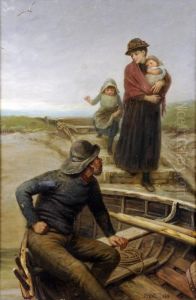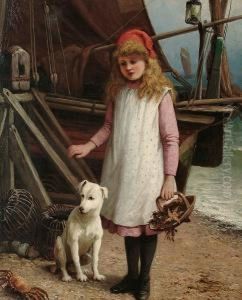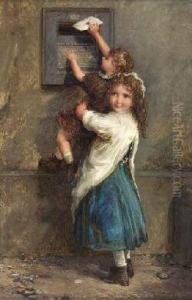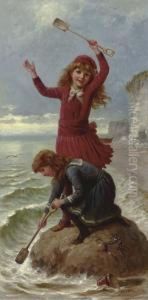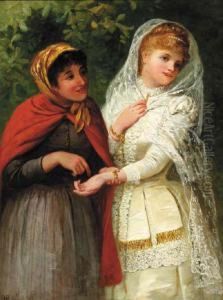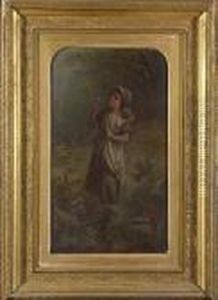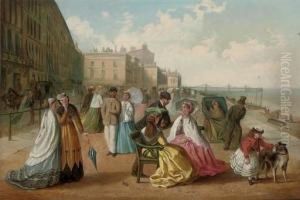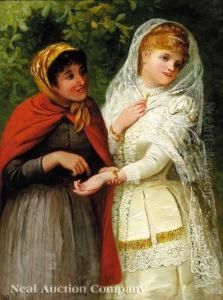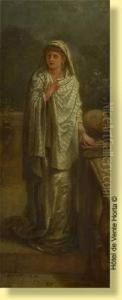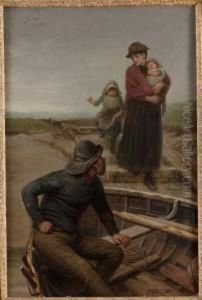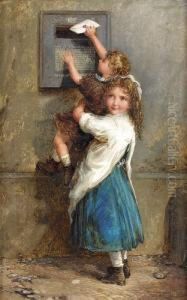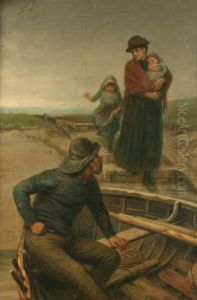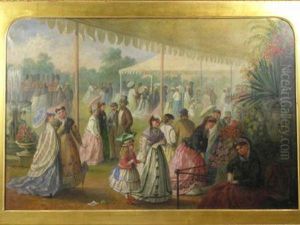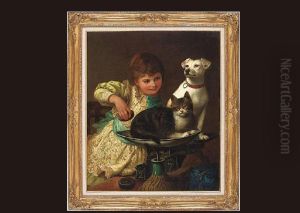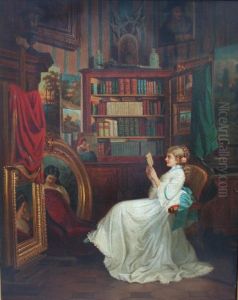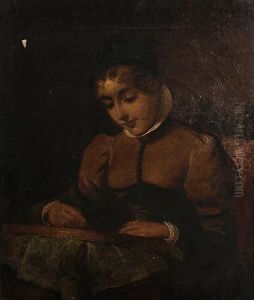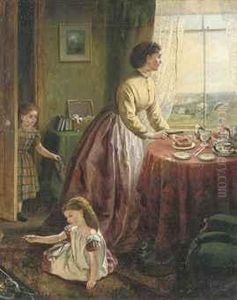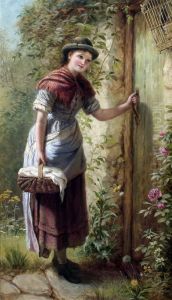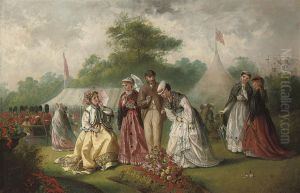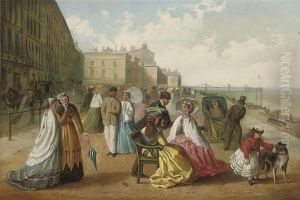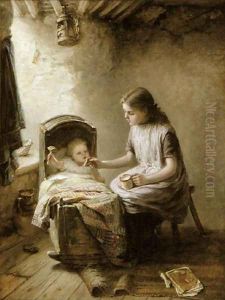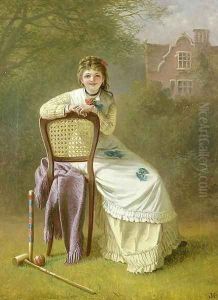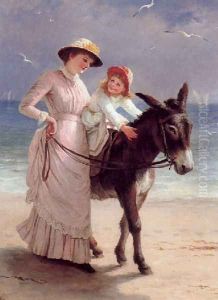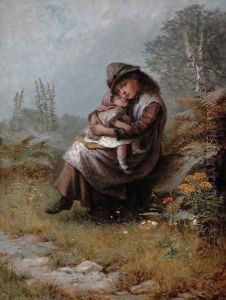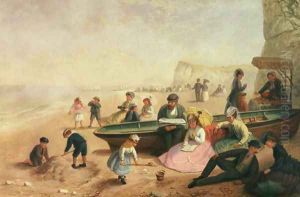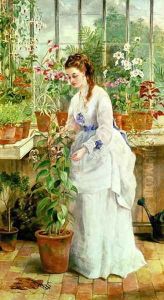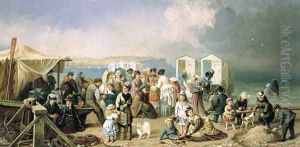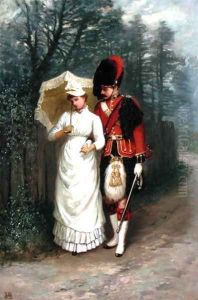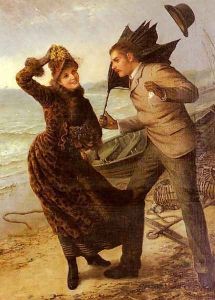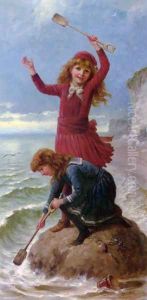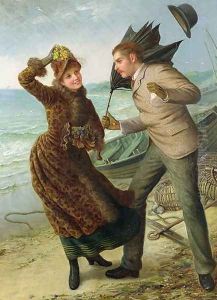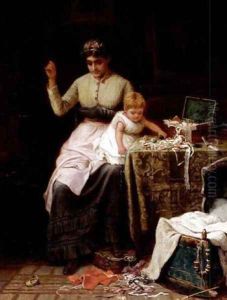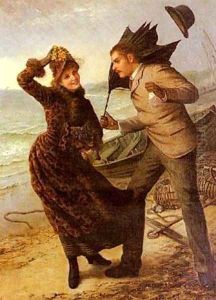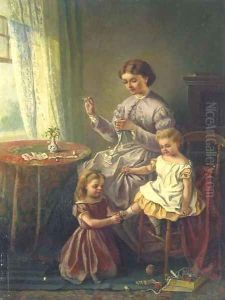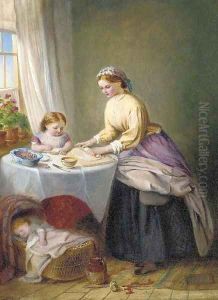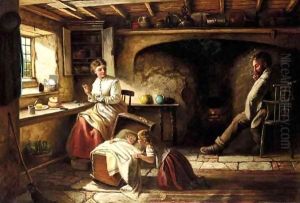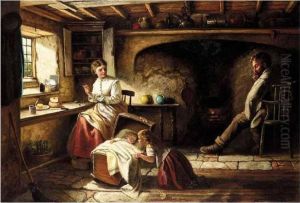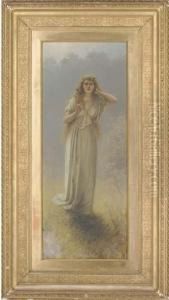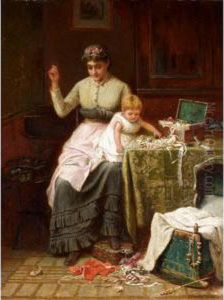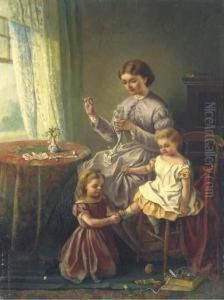Jane Maria Bowkett Paintings
Jane Maria Bowkett was a British painter known for her charming watercolors and oil paintings, predominantly featuring domestic and genre scenes, as well as floral arrangements. Born in 1837 in Cheltenham, Gloucestershire, England, Bowkett developed her skills under the tutelage of the prominent Victorian artist George Frederick Watts when she was in her twenties.
Her talent was evident early on, and she exhibited at the Royal Academy of Arts in London when she was just 22 years old. Throughout her career, she continued to exhibit there and at other prestigious institutions like the British Institution and the Society of British Artists. Her works were well received, and she gained a reputation for her detailed and delicate portrayal of interiors and the everyday life of the Victorian era.
In addition to her painting career, Bowkett was also an art teacher. She published a book titled 'Instructions in the Art of Painting in Water Colours on Ivory, Paper, and Vellum' in 1870, which provided guidance on watercolor painting, a medium that was becoming increasingly popular at the time.
Jane Maria Bowkett married fellow artist Alfred Walter Williams, who was the brother of the well-known landscape painter Edward Williams and part of the famous Williams family of painters, often referred to as the 'Barnes School.' Together, they had a significant influence on the Victorian art scene. Bowkett was a member of the female artist society called the Society of Women Artists, which aimed to support and promote the work of female artists.
Despite her success, Jane Maria Bowkett's work, like that of many women artists of the era, has not been as widely recognized in the history of art as that of her male counterparts. However, her contribution to the Victorian art landscape was substantial, and today, her paintings can be found in various art collections, reflecting the era's artistic and cultural values. She passed away in 1891, leaving behind a legacy of artwork that offers a window into the domestic life and aesthetics of the 19th century.
